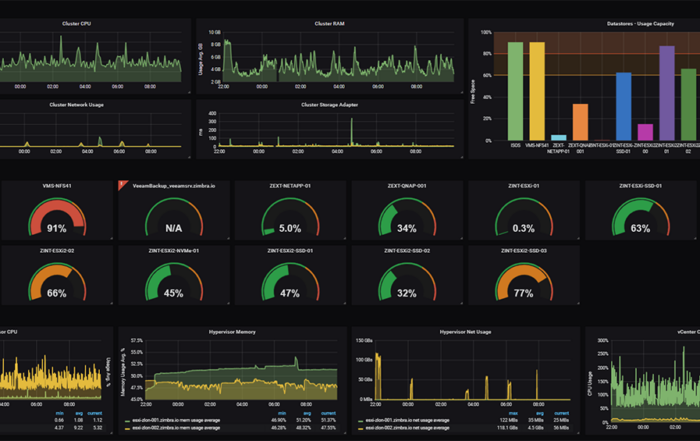
It’s not an exaggeration to state that container technology has dramatically transformed the way software is developed, deployed, and scaled in the cloud. Just a few years ago, developers had to grapple with the all-too-familiar “it works on my machine” issue. Enter containers, and this issue is almost forgotten history. However, as containerized applications grow in size and complexity, orchestrating these containers effectively becomes a challenge in itself. That’s where container orchestration comes into play.
Let’s embark on an enriching journey into the heart of container orchestration.
What is Container Orchestration?
Container orchestration is the process of managing the lifecycle of containers, especially in large, dynamic environments. This encompasses deployment, scaling, networking, and ensuring high availability of containers. It’s like being the conductor of a vast, intricate symphony where each musician (or container) needs to be in perfect sync to produce harmonious results.
Why Orchestrate?
Imagine deploying a handful of containers; manual management might still be feasible. But what happens when you’re dealing with hundreds or thousands of containers? The situation becomes untenable. Plus, modern applications often require:
- Auto-scaling: Your application might face variable loads. It needs to scale up during high traffic and scale down when the traffic subsides.
- Load balancing: Properly distribute incoming traffic across multiple instances for optimized resource use and improved responsiveness.
- Self-healing: If a container crashes, it should be automatically replaced to ensure consistent availability.
- Rolling updates & rollbacks: Safely update your application with zero downtime, and rollback if anything goes amiss.
Orchestration tools handle these requirements, enabling you to manage containers at scale.
Popular Orchestration Solutions
Several solutions have come to the fore in recent years, but three stand out in popularity and widespread adoption:
- Kubernetes: Arguably the most well-known and widely adopted solution, Kubernetes (or K8s) originated at Google. It has a vast ecosystem, is cloud-agnostic, and boasts robust community support.
- Docker Swarm: Native to Docker, Swarm is easier to set up compared to Kubernetes. While it might not offer as much granularity and flexibility as K8s, it’s ideal for simpler applications.
- Amazon ECS: A cloud-specific solution, Amazon Elastic Container Service (ECS) is integrated deeply with other AWS services.
Of these, Kubernetes has particularly taken the tech world by storm, becoming almost synonymous with container orchestration.
Key Concepts in Orchestration
Before you dive deeper into orchestration tools, it’s crucial to familiarize yourself with some foundational concepts:
- Node: A machine, VM, or physical server on which containers run.
- Pod: The smallest deployable unit in Kubernetes, a pod can host multiple containers that need to operate together.
- Service: A way to expose your application. In Kubernetes, for example, services enable network access to a set of pods, acting as a load balancer.
- ReplicaSet/Replication Controller: Ensures that a specified number of pod replicas are running at any given time. This helps in maintaining high availability.
- ConfigMap and Secret: In Kubernetes, these are used to manage configuration data and sensitive information, keeping it separate from application code.
- Volume: Provides storage to containers, ensuring data persistence across restarts.
- Namespace: Helps segment a cluster into sub-clusters, each potentially for different stakeholders or purposes.
The Role of the Cloud
Cloud platforms have integrated orchestration tools, making it easier for developers to deploy containerized applications at scale. Services like Google Kubernetes Engine (GKE), Amazon EKS, and Azure Kubernetes Service (AKS) offer managed Kubernetes clusters, reducing the overhead of setup and management.
The Path Forward
Container orchestration has significantly reduced the complexity of managing microservices architectures, but it’s not a magic bullet. Developers need to understand their applications, the nature of their workloads, and choose the right orchestration tool that aligns with their requirements.
Furthermore, as the world of orchestration continues to evolve, it’s paramount for professionals to stay updated, adapt, and learn. Embracing container orchestration doesn’t just offer operational benefits but also fosters a mindset of scalability and resilience.
Conclusion
Container orchestration is a testament to the fact that as technological challenges grow, solutions evolve to tackle them head-on. The world of containers has grown beyond isolated deployment units to orchestrated symphonies of applications that scale, heal, and update on the go.
While it’s a journey filled with complexity, the rewards in terms of scalability, resilience, and efficiency are worth the deep dive. So, strap in, and let the orchestration begin!
Are you a cloud enthusiast? Stay tuned to our blog for more deep dives into the fascinating world of cloud technology!





